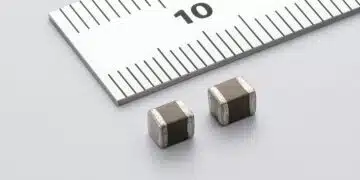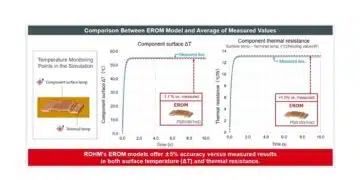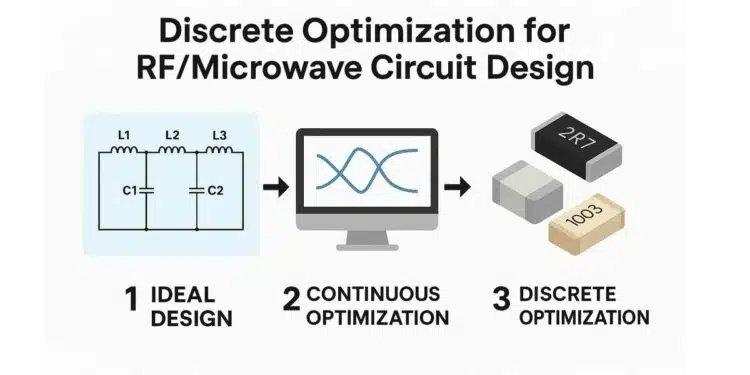Modelithics, Inc., a leader in precision RF and microwave measurement and modeling, published a blog article on he circuit design process through the integration of Discrete Optimization in Keysight’s Advanced Design System (ADS) using Modelithics Microwave Global Models™.
This process enables engineers to directly optimize toward real‑world manufacturer part values—eliminating the performance compromises and guesswork often associated with translating theoretical designs into practical builds.
Bridging the Gap Between Theory and Manufacturing
Traditional CAD optimization workflows for RF/microwave filters, amplifiers, and other resistor, inductor, capacitor RLC‑based designs often result in “ideal” component values that do not match available market parts. With Discrete Optimization, designers can:
- Automatically select the best available in‑series component values from multiple vendors.
- Maintain performance targets without iterative manual substitutions.
- Apply the process equally to inductors, capacitors, and resistors.
How It Works
- Global Model Coverage – Each Microwave Global Model spans the full part‑series range, supports tuning, continuous optimization, and Discrete Optimization parameters (
L_Discrete,C_Discrete,R_Discrete). - Optimization Mode – Engineers set nominal, minimum, and maximum values; ADS identifies the optimal real‑life component within those bounds.
- Manual Override – Designers can still select specific part numbers when desired.
Case Study: Lowpass Filter Success
In a lowpass filter example targeting a 2 GHz passband:
- Ideal Design – Started with calculated values (e.g., L1/L3 = 5.569 nH, C1/C2 = 2.076 pF).
- With Modelithics Models – Real component parasitics shifted the passband down by ~630 MHz.
- Continuous Optimization – Restored performance with non‑manufacturable values.
- Discrete Optimization – Final manufacturable values (e.g., L1/L3 = 2.7 nH, C1/C2 = 1.5 pF) met all goals on first prototype.
Performance & Productivity Gains
The streamlined workflow means:
- Faster design iterations
- Higher first‑pass success rates
- Simplified transition from simulation to fabrication
Quote from Modelithics Engineering Team:
“By embedding Discrete Optimization directly into the simulation phase, we’re giving engineers a powerful way to design for reality from day one—saving time, reducing cost, and improving overall performance.”
Read the full blog detailed post article here:
For more information or to request a free trial of Modelithics Microwave Global Models, visit www.modelithics.com or contact [email protected].
































